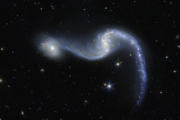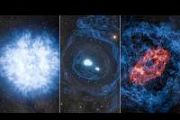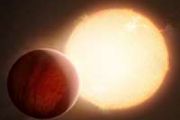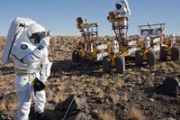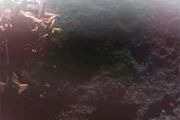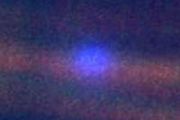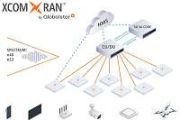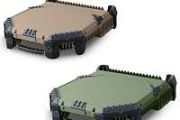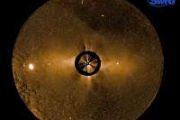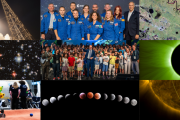
Copernical Team
D-Orbit signs contract with the European Space Agency under the Boost! Project
 The UK branch of D-Orbit, a leader in the orbital transportation industry, has announced the signing of a contract with the European Space Agency (ESA) under the Boost! Project with ESA's Commercial Space Transportation Services and Support Programme.
The Responsive Microlauncher Service, which provides end-to-end delivery of payloads in orbit, is designed to utilise the upcoming small lau
The UK branch of D-Orbit, a leader in the orbital transportation industry, has announced the signing of a contract with the European Space Agency (ESA) under the Boost! Project with ESA's Commercial Space Transportation Services and Support Programme.
The Responsive Microlauncher Service, which provides end-to-end delivery of payloads in orbit, is designed to utilise the upcoming small lau A large tidal stream observed in the Sombrero galaxy
 According to the latest cosmological models, large spiral galaxies such as the Milky Way grew by absorbing smaller galaxies, by a sort of galactic cannibalism. Evidence for this is given by very large structures, the tidal stellar streams, which are observed around them, which are the remains of these satellite galaxies. But the full histories of the majority of these cases are hard to study, be
According to the latest cosmological models, large spiral galaxies such as the Milky Way grew by absorbing smaller galaxies, by a sort of galactic cannibalism. Evidence for this is given by very large structures, the tidal stellar streams, which are observed around them, which are the remains of these satellite galaxies. But the full histories of the majority of these cases are hard to study, be Webb Telescope to explore a neighboring, dusty planetary system
 Researchers will use NASA's upcoming James Webb Space Telescope to study Beta Pictoris, an intriguing young planetary system that sports at least two planets, a jumble of smaller, rocky bodies, and a dusty disk. Their goals include gaining a better understanding of the structures and properties of the dust to better interpret what is happening in the system. Since it's only about 63 light-years
Researchers will use NASA's upcoming James Webb Space Telescope to study Beta Pictoris, an intriguing young planetary system that sports at least two planets, a jumble of smaller, rocky bodies, and a dusty disk. Their goals include gaining a better understanding of the structures and properties of the dust to better interpret what is happening in the system. Since it's only about 63 light-years From the sun to the stars: A journey of exoplanet discovery begins
 The NEID spectrometer, a new tool for the discovery of planets outside of our solar system, has now started its scientific mission at the WIYN 3.5m telescope at Kitt Peak National Observatory, Arizona.
"We are proud that NEID is available to the worldwide astronomical community for exoplanet discovery and characterization," said Jason Wright, professor of astronomy and astrophysics at Penn
The NEID spectrometer, a new tool for the discovery of planets outside of our solar system, has now started its scientific mission at the WIYN 3.5m telescope at Kitt Peak National Observatory, Arizona.
"We are proud that NEID is available to the worldwide astronomical community for exoplanet discovery and characterization," said Jason Wright, professor of astronomy and astrophysics at Penn NASA conducts 5th test in RS-25 series
 NASA conducted a fifth RS-25 single-engine hot fire July 14 as a continuation of its ongoing seven-part test series, supporting development and production of engines for the agency's Space Launch System (SLS) rocket on future missions to the Moon.
Operators fired the engine for more than eight minutes (500 seconds) on the A-1 Test Stand at Stennis Space Center near Bay St. Louis, Mississip
NASA conducted a fifth RS-25 single-engine hot fire July 14 as a continuation of its ongoing seven-part test series, supporting development and production of engines for the agency's Space Launch System (SLS) rocket on future missions to the Moon.
Operators fired the engine for more than eight minutes (500 seconds) on the A-1 Test Stand at Stennis Space Center near Bay St. Louis, Mississip 'I pump but don't dump' bitcoin, says Musk
 Tesla founder Elon Musk said Wednesday he personally has invested in bitcoin and other cryptocurrencies but that he does not manipulate or "dump" the digital currencies.
In a wide-ranging online panel discussion that included Twitter and Square founder Jack Dorsey, Musk said he believes in cryptocurrencies as a way to "increase the power of the individual in relation to government," and that
Tesla founder Elon Musk said Wednesday he personally has invested in bitcoin and other cryptocurrencies but that he does not manipulate or "dump" the digital currencies.
In a wide-ranging online panel discussion that included Twitter and Square founder Jack Dorsey, Musk said he believes in cryptocurrencies as a way to "increase the power of the individual in relation to government," and that The weather forecast for Venus
 Little is known about the weather at night on Venus as the absence of sunlight makes imaging difficult. Now, researchers have devised a way to use infrared sensors on board the Venus orbiter Akatsuki to reveal the first details of the nighttime weather of our nearest neighbor. Their analytical methods could be used to study other planets including Mars and gas giants as well. Furthermore, the st
Little is known about the weather at night on Venus as the absence of sunlight makes imaging difficult. Now, researchers have devised a way to use infrared sensors on board the Venus orbiter Akatsuki to reveal the first details of the nighttime weather of our nearest neighbor. Their analytical methods could be used to study other planets including Mars and gas giants as well. Furthermore, the st NASA seeks industry feedback for Artemis Moon Landing Services
 NASA initiated collaboration with industry in the agency's first formal step in establishing regular crewed transportation to the lunar surface as a part of Artemis. In a request for information (RFI), NASA is asking U.S. companies for feedback to inform the agency's plan for purchasing human landing system services to ferry astronauts from Gateway in lunar orbit to the surface of the Moon.
NASA initiated collaboration with industry in the agency's first formal step in establishing regular crewed transportation to the lunar surface as a part of Artemis. In a request for information (RFI), NASA is asking U.S. companies for feedback to inform the agency's plan for purchasing human landing system services to ferry astronauts from Gateway in lunar orbit to the surface of the Moon. NASA rover preparing to take first Mars rock samples
 The Perseverance Mars rover is preparing to collect its first rock sample from the site of an ancient lake bed, as its mission to search for signs of past life begins in earnest, NASA said Wednesday.
The milestone is expected to take place within two weeks in a scientifically interesting region of the Jezero Crater called the "Cratered Floor Fractured Rough."
"When Neil Armstrong took t
The Perseverance Mars rover is preparing to collect its first rock sample from the site of an ancient lake bed, as its mission to search for signs of past life begins in earnest, NASA said Wednesday.
The milestone is expected to take place within two weeks in a scientifically interesting region of the Jezero Crater called the "Cratered Floor Fractured Rough."
"When Neil Armstrong took t NASA Perseverance Mars Rover to acquire first sample
 NASA is making final preparations for its Perseverance Mars rover to collect its first-ever sample of Martian rock, which future planned missions will transport to Earth. The six-wheeled geologist is searching for a scientifically interesting target in a part of Jezero Crater called the "Cratered Floor Fractured Rough."
This important mission milestone is expected to begin within the next
NASA is making final preparations for its Perseverance Mars rover to collect its first-ever sample of Martian rock, which future planned missions will transport to Earth. The six-wheeled geologist is searching for a scientifically interesting target in a part of Jezero Crater called the "Cratered Floor Fractured Rough."
This important mission milestone is expected to begin within the next 











